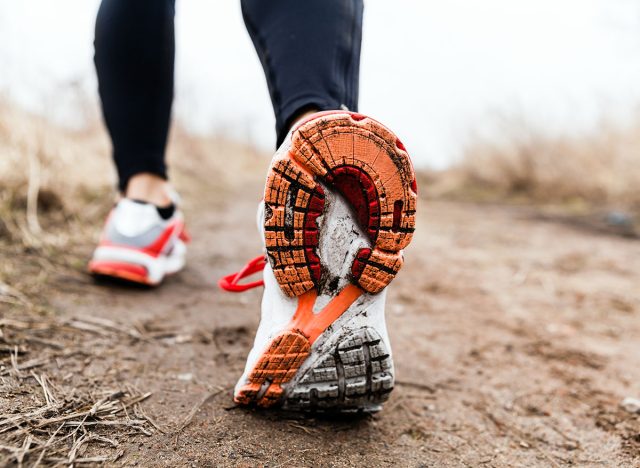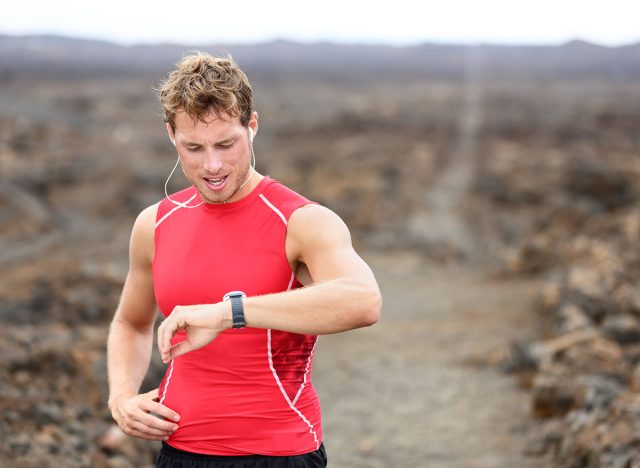5 Effective Ways to Walk to Burn Body Fat

Walking is one of the most effective—and convenient—ways to burn fat and get fit. There's a reason #HotGirlWalks is so popular in the online fitness space: Walking is a low-impact way of working out with a low chance of causing injury, and it's accessible for essentially any fitness level or ability. All you have to do is get going and build your way up to the ideal level of endurance. And the best part is, you don't have to buy any equipment or fancy gadgets. All that's needed is some decent shoes, a space to walk (whether outside or on the spot), and the motivation to make it happen. Here are five ways to walk to burn body fat—no gym membership is needed!
Burning Calories

Experts say you can't lose weight without burning off more calories than you take in—and walking is a great way to do that. "Physical activity, such as walking, is important for weight control because it helps you burn calories," Katherine Zeratsky, RD, LD, tells the Mayo Clinic. "If you add 30 minutes of brisk walking to your daily routine, you could burn about 150 more calories a day. Of course, the more you walk and the quicker your pace, the more calories you'll burn."
Walk For At Least 30 Minutes

Because walking is a lower-intensity cardio exercise, you need to do it for at least 30 minutes to get the fat-burning benefits. "If you walk 2 miles, you'll burn 200 calories, mostly from carbs but a little from fat because, as you reach the end of your walk, when you're using mostly slow glycolysis and your oxidative system," according to HPRC. "If you run 2 miles, you'll still burn 200 calories, but you will do so faster than with walking and almost exclusively from carbs. Since 2 miles is a fairly short distance, you will probably finish the run in less time than it takes for your body to start the fat-oxidation process. A cardio session should be at least 20–30 minutes and at an intensity of about 70% of your max heart rate in order to maximize fat loss during exercise."
RELATED: Becky Greenan Shows Off Six-Pack and Reveals Her 10-Minute At-Home "Abs and Core" Workout
Raising Your Heart Rate

Even walking in place will get your heart rate going and burn fat. Just move! "Anything that gets you moving instead of just sitting or lying down is going to be beneficial for you in the long run," exercise physiologist Jordan Boreman, MS, CES, tells the Cleveland Clinic. "By walking in place, you're raising your heart rate, which is going to signal to your body to start pumping more oxygen and blood to your muscles to help them move more efficiently, thus burning more calories."
Interval Training

Interval training is a good way to give your walks an edge. "You can also alternate periods of brisk walking with leisurely walking," say the experts at the Mayo Clinic. "This type of interval training has many benefits, such as improving cardiovascular fitness and burning more calories than regular walking. And interval training can be done in less time than regular walking."
RELATED: Nicole Winter Flashes Flat Abs and Shares Lower Body At-Home Workout for Beginners
Change the Intensity

Don't forget to vary your walking pace as your body becomes accustomed to your fitness level. "It's very good for people who are just starting out," Boreman says. "Walking in place is an exercise that's going to help you burn calories over a short time span. Over time, your body is going to get used to the exercise that you're doing. So varying it up and increasing intensity as you go on can help with additional weight loss. It's convenient, it's something that you don't have to travel anywhere to do it either."




